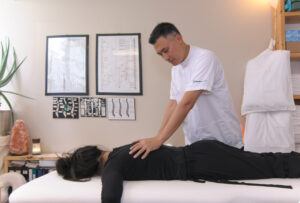In today’s fast-paced world, stress and physical demands are constant companions. Many seek balance and relief from these pressures. Integrated therapies offer a holistic approach to well-being. They blend various techniques to address the mind, body, and spirit.
These therapies are not just about treating symptoms. They aim to uncover and heal the root causes of discomfort. By doing so, they promote lasting health and vitality.
Whether you’re a corporate executive, fitness instructor, or teacher, integrated therapies can be transformative. They provide tools to manage stress, prevent injuries, and maintain energy.
Exploring these therapies can lead to a more balanced and fulfilling life. Let’s delve into the benefits and possibilities they offer.
What Are Integrated Therapies?
Integrated therapies combine various therapeutic practices into a cohesive plan. They draw from different traditions and modern techniques to enhance well-being. This approach allows for personalized treatment.
These therapies emphasize the interconnectedness of mind, body, and spirit. This holistic perspective is central to their effectiveness. By recognizing the whole person, they can bring about profound healing.
A few key components often found in integrated therapies include:
- Osteopathic therapies: Focus on the body’s structure and function
- Massage therapy: Relieves tension and promotes relaxation
- Acupuncture: Balances energy flow through the body
- Mindfulness and meditation: Foster mental clarity and emotional stability
Each of these practices offers unique benefits. However, when combined, they create powerful synergies. For example, pairing osteopathic therapies with mindfulness can enhance physical and mental resilience.
Integrated therapies cater to individuals seeking comprehensive solutions. They provide an adaptable framework that supports diverse needs and goals. By blending different modalities, these therapies offer a path to a more harmonious and healthy lifestyle.
The Mind-Body-Spirit Connection in Integrated Therapies
Integrated therapies recognize that true wellness involves the alignment of the mind, body, and spirit. This holistic approach is essential for lasting health and balance. Each element deeply influences the others.
The mind-body-spirit connection embodies the idea that mental and emotional states can affect physical health, and vice versa. Stress, anxiety, and other emotional disturbances often manifest as physical symptoms. Addressing these aspects can lead to more profound healing.
Practitioners of integrated therapies use several methods to foster this connection:
- Breathwork: Enhances mental clarity and reduces stress
- Yoga and movement: Promotes physical strength and emotional well-being
- Energy healing: Balances the body’s energy systems
These practices nurture the synergy between mental and physical states. For example, yoga can improve flexibility while calming the mind. Similarly, meditation can foster emotional resilience and support physical healing. By focusing on the mind-body-spirit connection, integrated therapies offer a comprehensive path to health and wholeness.
Key Modalities: From Osteopathic Therapies to Holistic Approaches
Integrated therapies encompass a wide range of modalities designed to harmonize the body and mind. One central approach is osteopathic therapy. This method involves manual manipulation to improve joint function and alleviate discomfort. It often serves as a foundation for restoring physical balance.
In addition to osteopathic therapies, other modalities focus on energy and emotional healing. Reiki, for instance, is an energy-based practice that seeks to clear blockages and promote healing. This can deeply enhance emotional well-being and physical health.
Other key holistic approaches include:
- Acupuncture: Balances energy pathways
- Massage therapy: Reduces muscle tension
- Chiropractic care: Aligns spinal health
Each modality contributes uniquely to a person’s health journey. Acupuncture targets pressure points to ease tension and improve energy flow. Massage therapy relaxes muscles, reducing stress and enhancing circulation. Chiropractic care focuses on spinal health, which is crucial for nervous system function.
Selecting the right combination of therapies is crucial. It allows individuals to address specific needs comprehensively. Every individual is unique, and so should be the path to health. These diverse practices collectively contribute to an integrated approach, fostering overall well-being.
Who Can Benefit? Real-Life Scenarios
Integrated therapies offer diverse benefits to various individuals with unique challenges. Let’s explore some real-life scenarios to illustrate their impact.
Consider a corporate executive who faces constant stress and struggles with work-life balance. With integrated therapies, they can manage stress through tailored practices like meditation and massage. These therapies support mental clarity and resilience.
Another scenario involves a fitness instructor burdened with physical demands and injuries. Osteopathic therapies offer non-invasive solutions for injury prevention and recovery. Techniques such as manual adjustments and soft tissue manipulation aid in maintaining peak condition.
An elementary school teacher might experience energy depletion from prolonged work hours. Integrated approaches like Reiki or acupuncture can replenish energy levels and nurture emotional resilience. These practices help teachers remain engaged and supportive in the classroom.
Integrated therapies serve various people across different professions and lifestyles, offering supportive techniques tailored to unique needs. By addressing the distinct issues each profession presents, these therapies ensure a balanced and holistic approach to well-being.
How to Find Therapies Near Me: Tips for Choosing the Right Practitioner
Finding integrated therapies that suit your needs is an important step in your wellness journey. Begin by researching local practitioners who specialize in various holistic modalities. Online directories and community boards are a good starting point.
When selecting a practitioner, consider their qualifications, experience, and areas of expertise. It’s crucial to choose someone whose approach aligns with your personal goals. Reach out to them with any questions to gauge if they’re the right match for you.
Here are some tips to guide your search:
- Verify Credentials: Ensure the practitioner is licensed or certified in their field.
- Seek Recommendations: Ask friends or family for referrals.
- Schedule a Consultation: Meet to discuss your needs and expectations.
By taking these steps, you’ll be better equipped to find a qualified practitioner who can support your holistic health journey.
Taking the First Step: What to Expect from Your Integrated Therapy Journey
Embarking on an integrated therapy journey can be both exciting and transformative. Your first session typically involves a detailed assessment of your physical, mental, and emotional health. This holistic evaluation helps practitioners tailor a treatment plan that meets your unique needs.
During the process, you’ll experience various modalities that may include osteopathic therapies, massage, or mindfulness practices. It’s normal to try different techniques to discover what resonates best with you. The goal is to create a harmonious balance between mind, body, and spirit.
As you progress, be open to change and growth. Remember that healing is a journey, not a destination. Celebrate your improvements, however small, and stay committed to your well-being. Each step brings you closer to a healthier, more balanced life.












